The Orange Siberian Cat is absolutely adorable. Its thick, long fur makes it a beautiful creature by itself, but in orange, it really makes your heart melt.
However, while most everyone can agree that these animals are royally gorgeous, many people do have some questions about this particular kind of Siberian cat. For instance, you could be wondering how rare they are, what their personality is like, how to get one, or what the differences are between the orange Siberian cat and other colorations. If so, you’ve come to the right place!
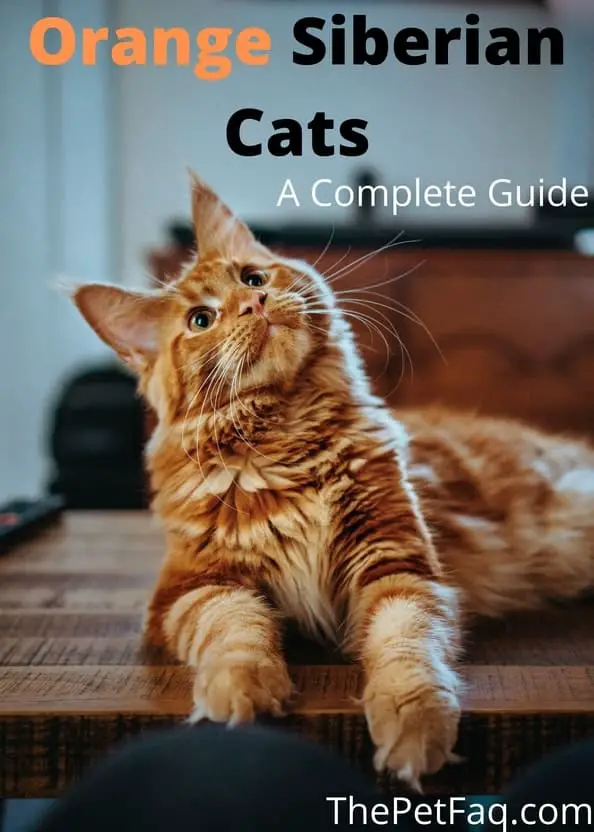
Today, we’re going to take an in-depth look at the orange Siberian cat to answer any questions you may have.
Can Siberian cats be orange?
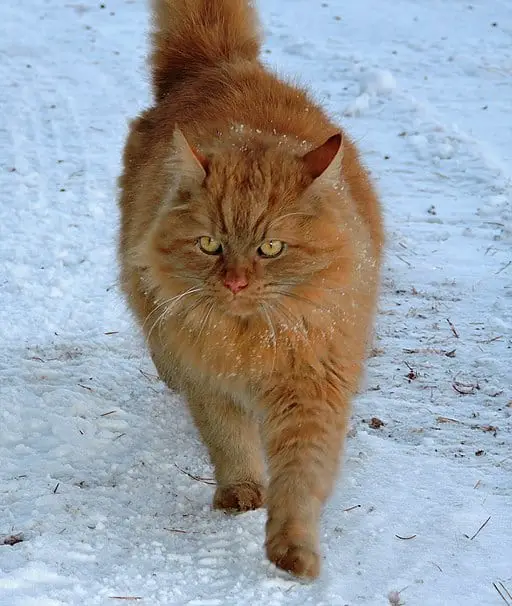
Officially, the Cat Fancier’s Association does not recognize cats in the color orange. What they do recognize is the color red.
Nevertheless, while the CFA does not officially recognize orange as a color for Siberian cats, many red Siberian cats are actually more orange in color and are thus often referred to as Orange Siberian Cats. Just take a look at any of the pictures included in this article – the color is clearly orange, so I would say that Siberian cats can definitely be orange, even if the color is not officially recognized.
What’s interesting though is that orange Siberian cats never have a solid-colored coat. They always have a striped pattern in one of four types: mackerel, ticked, spotted, or classic. This means that all orange Siberian cats are tabby by definition.
What makes a Siberian Cat orange?
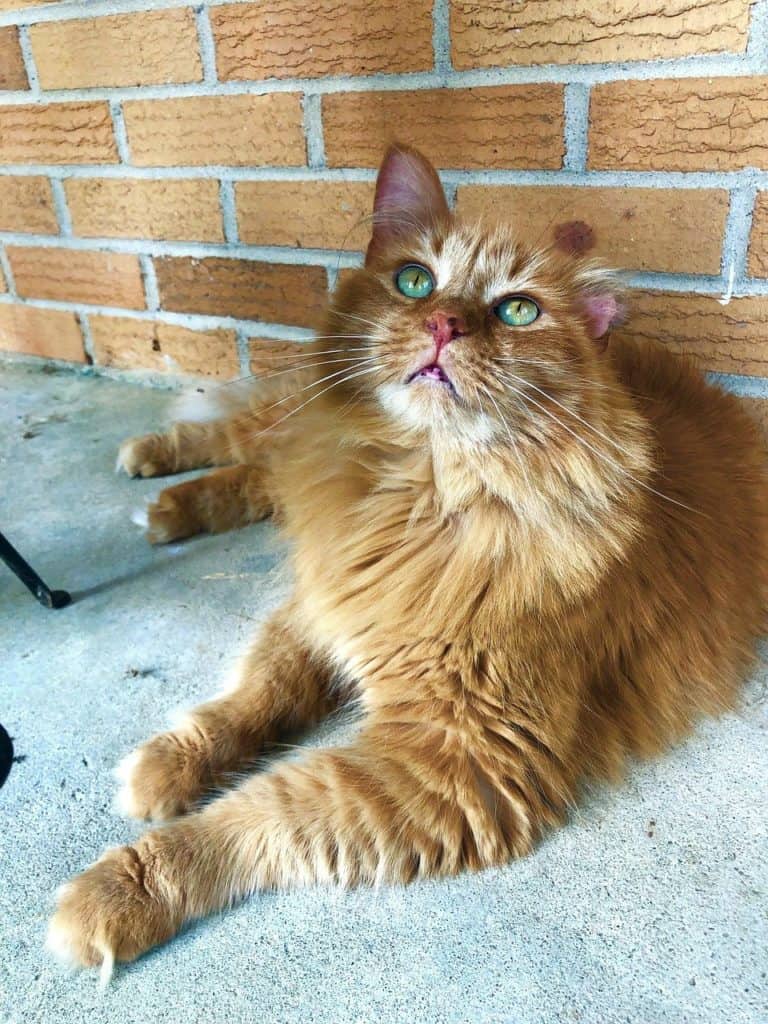
An Orange Siberian Cat has its particular coloration due to a pigment known as pheomelanin. This pigment is the same pigment that produces red hair in humans and interestingly enough is more common in male cats than in females.
The reason why most orange Siberian cats are male is that the gene that’s responsible for their orange color is on the X chromosome. Since female cats have 2 X chromosomes they need the gene for orange hair to occur twice. For males, who have 1 X chromosome and 1 Y chromosome, the gene needs to occur only once.
Because of this, 80% of all orange Siberian cats are male!
Orange Siberian Cat personality

There’s a never-ending debate on whether the color of a cat’s coat changes its personality. Some people believe that the color of a Siberian’s coat changes its behavior and that Orange Siberian Cats are more sociable and friendly than other colorations, but there’s no scientific evidence to support this.
Instead, it’s much more likely that the personality of a cat is affected by its breed, how you treat it, and of course their own individual nature.
Generally speaking, the Orange Siberian cat, just like any Siberian cat, is very friendly, affectionate, and gets along very well with children. They need a lot of attention and affection to be happy and do not do well in households where they are alone very often. They tend to follow their owner around a lot and enjoy spending as much time in your company as possible.
They’re also very intelligent and active and need a way to be stimulated mentally and physically. Make sure that you play with them frequently so that they can get the exercise and mental stimulation they need.
Is an Orange Siberian Cat rare?
an Orange Siberian cat is not as rare as some other colorations such as a white Siberian cat or a black Siberian cat.
As previously mentioned, orange Siberian cats are tabby cats, and tabby cats are the most common type of Siberian. Of course, not all tabby cats are orange. There are also grey, brown, cream, and many other types of tabby Siberians. Still, orange is a relatively common coloration for Siberian cats – good news if you’re looking to buy one!
However, while orange Siberians are not super rare, they’re not quite common either. Purebred Siberian cats, in general, are quite rare outside of Russia.
Orange Siberian Cat Price
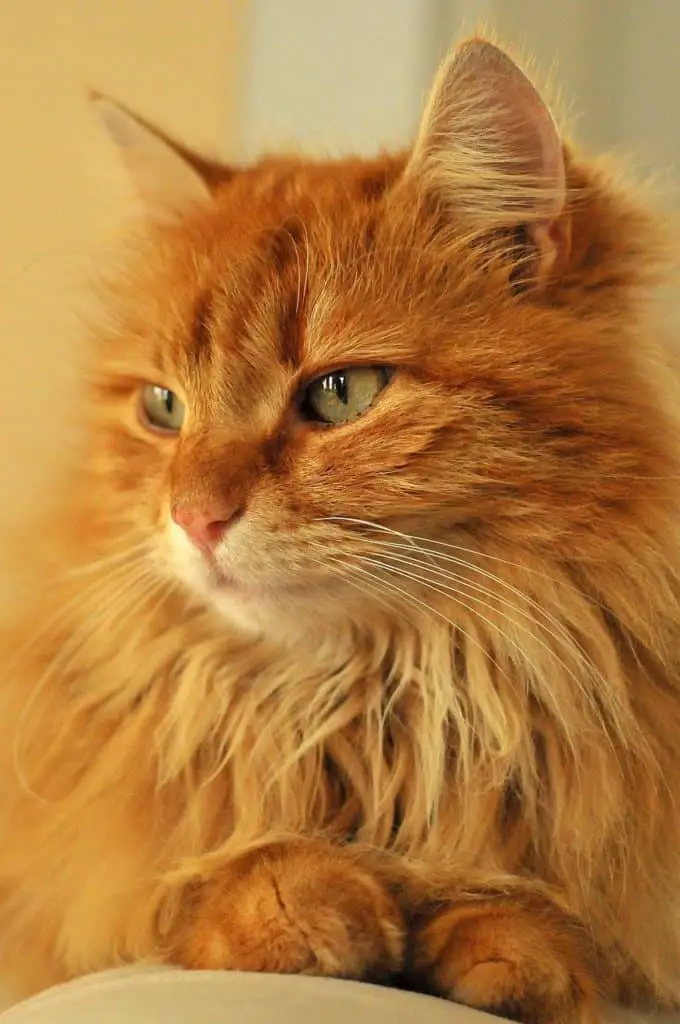
Orange Siberian cats are not cheap. Siberian cats in general are an expensive breed because they’re in high demand while the supply of them outside of Russia is relatively low.
Generally speaking, a reputable breeder will charge anywhere between $1200 and $4000 for a purebred orange Siberian kitten depending on pedigree, age, and location.
If you’re willing to spend this amount on a kitten, the best place to begin your search is on the Cat Fancier’s Association’s website.
On their website, they have a handy breeder search feature, which is a good way to find Siberian cat breeders. Another useful feature is that they have testimonials of previous customers, which makes it easier to find a good breeder. The kittens that are for sale through CFA registered breeders should come with all their paperwork completed and be in good health.
Orange Siberian Cat Size & Appearance
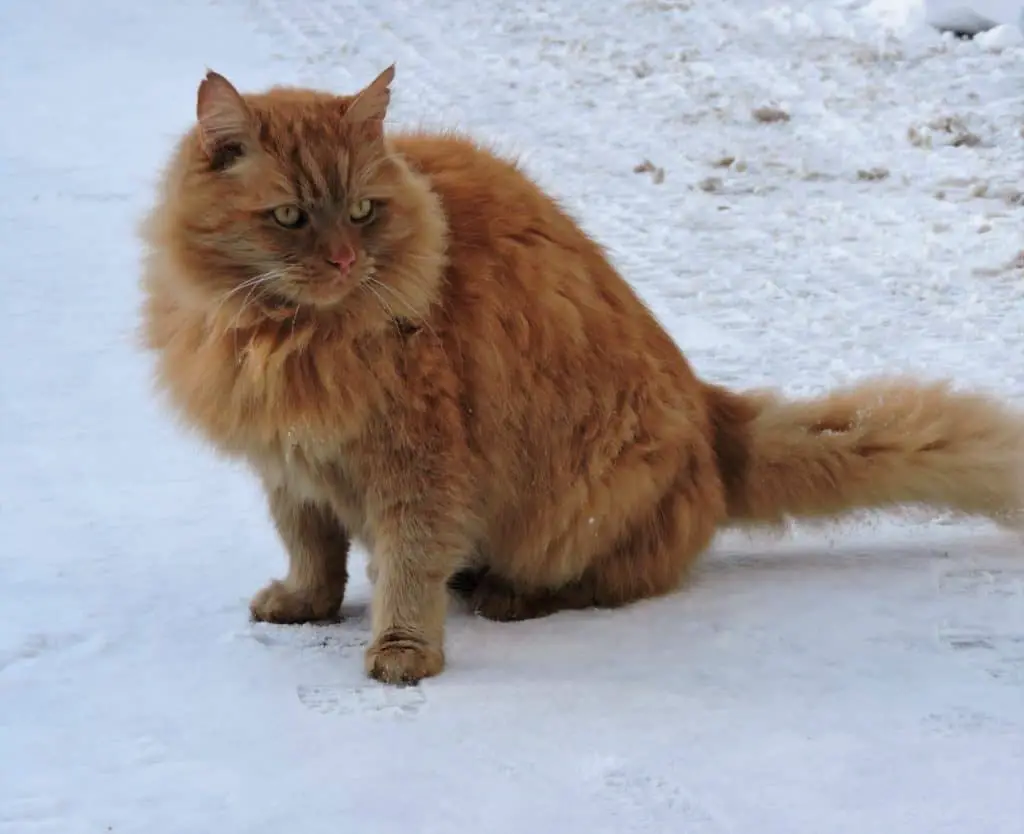
The size of a cat is not affected by the color of its coat. What it is affected by is the cat’s breed.
Siberian cats are quite a large breed. On average, they weigh around 8 to 17 pounds and have a length of 17 to 25 inches, but they can get even larger than that.
Their appearance can best be characterized as majestic. This breed is from Siberia, Russia, where it can be bone-chillingly cold. To protect itself from this cold, the Siberian has long, thick fur that helps to keep it warm. They shed this coat seasonally in the spring and fall. During that time, you might need to groom them more frequently.
In addition, they have large paws, a muscular body, and a very thickly furred tail.
Their head is a modified wedge with rounded contours. It’s broad at the top and then narrows slightly at the muzzle. Their ears are medium-large and have adorable furnishings of tufts of fur.
The Siberian’s eyes can be green, gold, copper, or green-gold. In addition, white Siberian cats can also have blue or odd eyes.
Orange Siberian Cat names
So, now you know everything there’s to know about the majestic orange Siberian cat. If what you’ve read, and the pictures you’ve seen, make you want to get one of these beautiful animals for yourself I wouldn’t be surprised. If you do decide to get one, you’ll of course need to give it a name. To help you get your mind running, here are some name ideas for your orange Siberian cat:
- Ginger
- Pumpkin
- Mango
- Cinnamon
- Paprika
- Garfield
- Simba
- Tiger
- Scorch
- Flame
- Ember
- How Long Do American Eskimo Dogs Live? Important Factors and Care Tips - September 29, 2023
- Do American Bulldogs Need Grooming? Essential Tips and Care Guidelines - September 29, 2023
- Do Bengal Cats Enjoy Playing? Essential Tips for Keeping Them Active - September 29, 2023